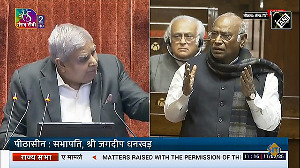Over the years, it has become fashionable to talk about the business opportunity offered by those at the bottom of the (economic) pyramid.
Many national and international seminars have been conducted to highlight this hitherto undiscovered gold-mine. Any challenge to the business rationale for pursuing such a market is considered heretical and almost blasphemous.
Under the assumption that it is the responsibility of all business managers to generate the optimum (and certainly a minimum acceptable) rate of return on financial investment, and that any deployment of tangible financial and management resources for the explicit purpose of chasing a business opportunity must have at least a theoretical (and subsequently, practical) probability of generating the desired return on capital, there is a strong case for very objectively examining the potential of this bottom-of-the-pyramid market before proceeding any further.
In India's context, the estimated discretionary retail consumption in 2009 will be about $436 billion (about Rs 18 lakh crore) out of the $720 billion (about Rs 31 lakh crore) of private consumption.
Of this, about 45 per cent ($196 billion or about Rs 850,000 crore) is urban, and the balance is rural. By 2013, both rural and urban retail markets could be as much as $290-300 billion each (and the total Indian retail market over $600 billion), i.e. an increment of almost $200 billion in additional consumption at current prices over next five years compared to 2008.
Of this, modern retail, which currently is less than $15 billion (about Rs 65,000 crore), may touch $95-100 billion by 2013, i.e. almost Rs 400,000 crore (Rs 4,000 billion). Food & beverages, of course, accounts for almost half of this retail consumption, though, both in absolute terms as well as percentage terms, other product and service categories will substantially increase in the coming years.
However, this consumption -- in absolute financial terms -- is largely accounted for by the middle and upper tiers of the pyramid. Alas, the almost romantic notion of catering to the needs of those at the "bottom of the pyramid" (BoP) does not really hold up to the harsh economic reality that this bottom does not offer a business opportunity.
According to NCAER estimates, in 2009, of the 222 million households in India, the absolutely BoP households (annual incomes below Rs 45,000) account for 15.6 per cent of them or about 35 million (about 200 million Indians). Another 80 million households are in income levels of Rs 45,000-90,000 per year.
These numbers also are more or less in line with the latest World Bank estimates of the "below-the-poverty-line" households that may total about 100 million (or about 456 million individuals). Of the $436 billion projected retail consumption in 2009, the bottom BoP (35 million) households will account for only 5 per cent or about $21.8 billion (just about Rs 90,000 crore).
To further complicate the situation, only 9 per cent of this consumption (i.e. about US$2 billion or Rs 8,600 crore) is in urban India, spread across 5,500 towns, and the balance 91 per cent (or about US$20 billion) is spread across the 660,000 plus villages in rural India.
Lastly, of the minuscule Rs 90,000 crore (Rs 900 billion) consumption from these 200 million individuals in the 35 million BoP households, as much as 72 per cent is accounted for by food, another 4 per cent by tobacco and other intoxicants, and about 7 per cent by clothing, and about 8 per cent by basic durables.
In absolute terms, it means a market potential of no more than Rs 6,300 crore for clothing, and about Rs 7,200 crore (Rs 72 billion) for durables. Food, of course, is not really an opportunity for marketers since the product basket is extremely basic and served through the public distribution system and other government support channels.
Finally, the BoP customer purchase frequency is much higher and from a business perspective, the transaction costs are therefore much greater if any organised attempt is made to reach out to this group.
Some of the marketers, of course, talk of their successes in the "bottom of the pyramid" market but they usually end up redefining the bottom that for them actually starts somewhere above these 35 million poorest (or even 100 million) households.
The message, therefore, is that BoP households are a stark social reality -- those who are at the top of the pyramid cannot just ignore the 200 plus million (or even 456 million) Indians who are at the absolute bottom of the economic ladder -- simply because in absolute numbers, this BoP stratum has very significant socio-political power and if their needs and aspirations are not looked into, they can, knowingly or unknowingly, create significant social unrest and instability.
The BoP stratum, therefore, should not be seen at this time as another business opportunity but a social obligation for more privileged individuals and businesses to take cognizance of. Efforts should be made to include them in the overall economic uplift process by way of creating/enabling conditions to make them employable for higher-value added functions so that their income levels first increase to a point that they become customers rather than mere consumers of basic needs.







 © 2025
© 2025